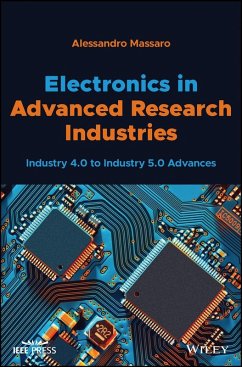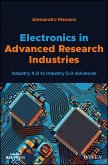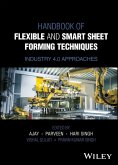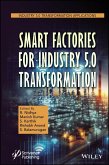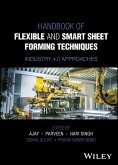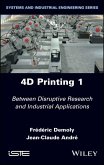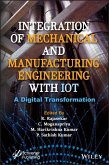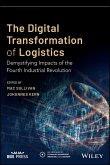Electronics in Advanced Research Industries
A one-of-a-kind examination of the latest developments in machine control
In Electronics in Advanced Research Industries: Industry 4.0 to Industry 5.0 Advances, accomplished electronics researcher and engineer Alessandro Massaro delivers a comprehensive exploration of the latest ways in which people have achieved machine control, including automated vision technologies, advanced electronic and micro-nano sensors, advanced robotics, and more.
The book is composed of nine chapters, each containing examples and diagrams designed to assist the reader in applying the concepts discussed within to common issues and problems in the real-world. Combining electronics and mechatronics to show how they can each be implemented in production line systems, the book presents insightful new ways to use artificial intelligence in production line machines. The author explains how facilities can upgrade their systems to an Industry 5.0 environment.
Electronics in Advanced Research Industries: Industry 4.0 to Industry 5.0 Advances also provides:
Perfect for professionals working in electrical industry sectors in manufacturing, production line manufacturers, engineers, and members of R&D industry teams, Electronics in Advanced Research Industries: Industry 4.0 to Industry 5.0 Advances will also earn a place in libraries of technicians working in the process industry.
A one-of-a-kind examination of the latest developments in machine control
In Electronics in Advanced Research Industries: Industry 4.0 to Industry 5.0 Advances, accomplished electronics researcher and engineer Alessandro Massaro delivers a comprehensive exploration of the latest ways in which people have achieved machine control, including automated vision technologies, advanced electronic and micro-nano sensors, advanced robotics, and more.
The book is composed of nine chapters, each containing examples and diagrams designed to assist the reader in applying the concepts discussed within to common issues and problems in the real-world. Combining electronics and mechatronics to show how they can each be implemented in production line systems, the book presents insightful new ways to use artificial intelligence in production line machines. The author explains how facilities can upgrade their systems to an Industry 5.0 environment.
Electronics in Advanced Research Industries: Industry 4.0 to Industry 5.0 Advances also provides:
- A thorough introduction to the state-of-the-art in a variety of technological areas, including flexible technologies, scientific approaches, and intelligent automatic systems
- Comprehensive explorations of information technology infrastructures that support Industry 5.0 facilities, including production process simulation
- Practical discussions of human-machine interfaces, including mechatronic machine interface architectures integrating sensor systems and machine-to-machine (M2M) interfaces
- In-depth examinations of Internet of Things (IoT) solutions in industry, including cloud computing IoT
Perfect for professionals working in electrical industry sectors in manufacturing, production line manufacturers, engineers, and members of R&D industry teams, Electronics in Advanced Research Industries: Industry 4.0 to Industry 5.0 Advances will also earn a place in libraries of technicians working in the process industry.
Dieser Download kann aus rechtlichen Gründen nur mit Rechnungsadresse in D ausgeliefert werden.

